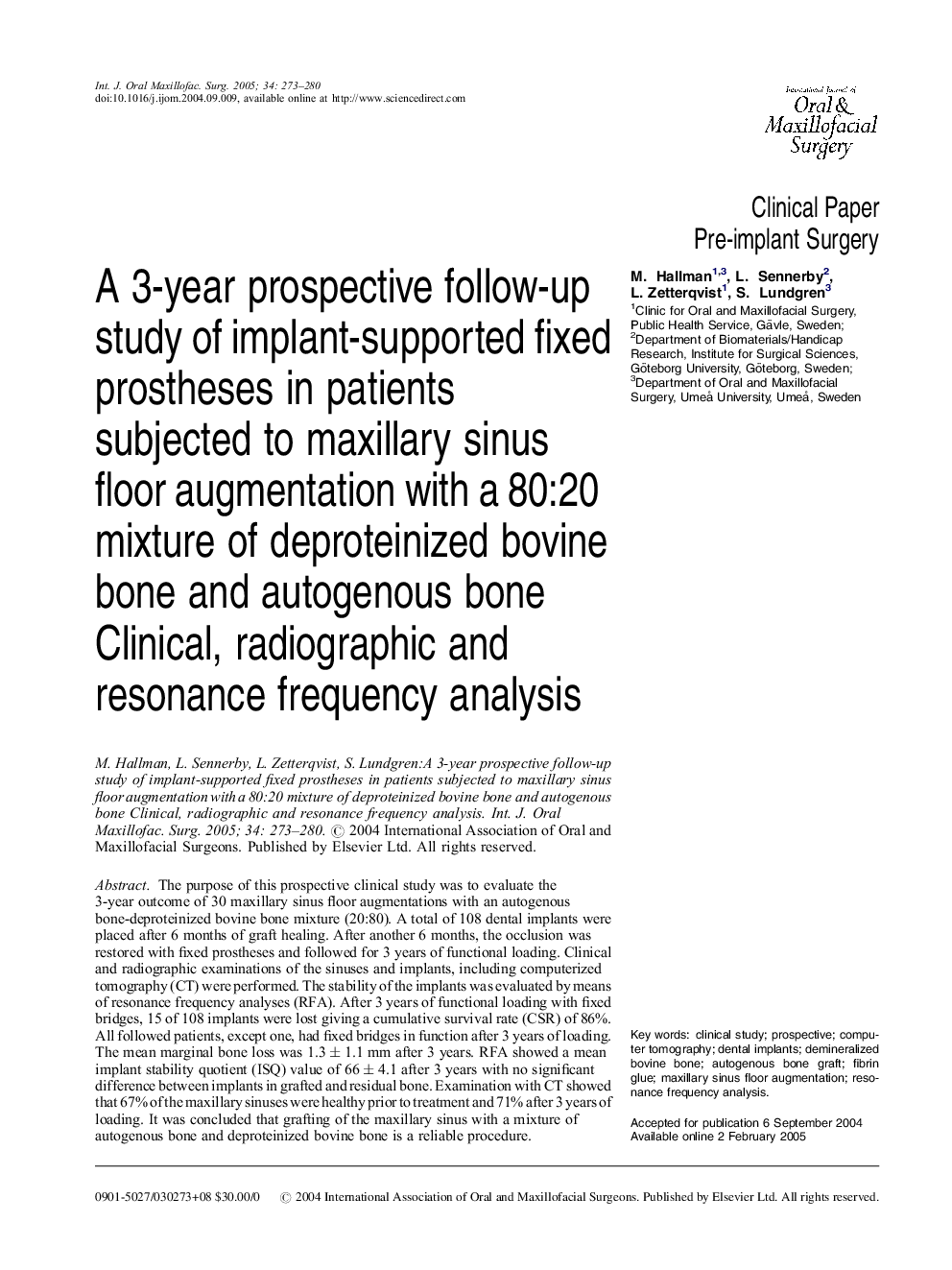| Article ID | Journal | Published Year | Pages | File Type |
|---|---|---|---|---|
| 10001034 | International Journal of Oral and Maxillofacial Surgery | 2005 | 8 Pages |
Abstract
The purpose of this prospective clinical study was to evaluate the 3-year outcome of 30 maxillary sinus floor augmentations with an autogenous bone-deproteinized bovine bone mixture (20:80). A total of 108 dental implants were placed after 6 months of graft healing. After another 6 months, the occlusion was restored with fixed prostheses and followed for 3 years of functional loading. Clinical and radiographic examinations of the sinuses and implants, including computerized tomography (CT) were performed. The stability of the implants was evaluated by means of resonance frequency analyses (RFA). After 3 years of functional loading with fixed bridges, 15 of 108 implants were lost giving a cumulative survival rate (CSR) of 86%. All followed patients, except one, had fixed bridges in function after 3 years of loading. The mean marginal bone loss was 1.3 ± 1.1 mm after 3 years. RFA showed a mean implant stability quotient (ISQ) value of 66 ± 4.1 after 3 years with no significant difference between implants in grafted and residual bone. Examination with CT showed that 67% of the maxillary sinuses were healthy prior to treatment and 71% after 3 years of loading. It was concluded that grafting of the maxillary sinus with a mixture of autogenous bone and deproteinized bovine bone is a reliable procedure.
Keywords
Related Topics
Health Sciences
Medicine and Dentistry
Dentistry, Oral Surgery and Medicine
Authors
M. Hallman, L. Sennerby, L. Zetterqvist, S. Lundgren,
